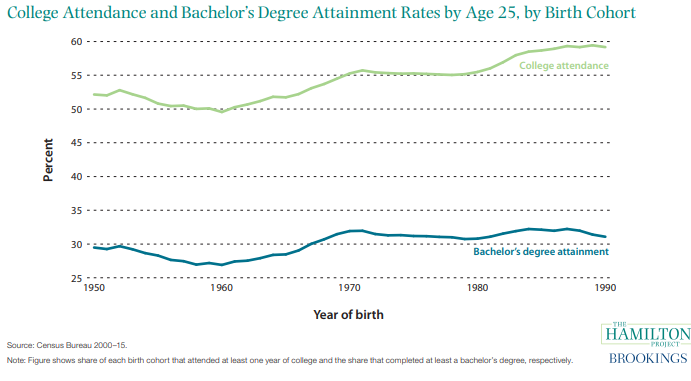Level the Playing Field for Different Kinds of Educational Paths
We’re all a bit like the guy who bought his wife a shotgun for Christmas because that’s what he wanted. We’ll say things like, “Wasn’t that an incredible game last night?”— expecting nothing less than an affirmative answer. It’s because we tend to assume other people are like us. It takes work not to.
It’s that way in higher education, too. The rules of public funding are determined largely by college graduates, typically graduates of elite institutions. College worked out marvelously for them. Naturally, they assume it’s for everyone. If we can just increase access, and encourage everyone to go, surely all can receive the same kind of benefit. Right?
This week Oren Cass of The Manhattan Institute wrote a strong critique of our country’s post-high school education funding. His argument is that “we spend too much money on college students and not enough on everyone else.”
Public Funding is Lopsided
Cass opens with a story of two high school seniors: One has strong academic talent; one lacks such talent. What happens to these two students as they approach graduation? Cass writes:
After high school graduation, the first student can access more than $10,000 annually in public funds to support his college experience. Federal funding for higher education has grown by 133 percent in the past 30 years; combined with tax breaks, loan subsidies and state-level funding, the annual total exceeds $150 billion. That funding will cover not only genuine instructional costs, but also state-of-the-art gyms, psychiatric and career counseling services, and whatever social programming the student-life bureaucracy can conceive.
And the second? “Annual federal funding for a non-college, vocational pathway, at both the high school and postsecondary levels, totals $1 billion.” One explanation, Cass writes, is that this huge imbalance is due to the belief that college is for everyone. But that’s clearly not working.
College Graduates are the Minority
Less than one in five students graduates both high school and college and then enters a career. The rest take other paths, some more successfully than others. While college enrollment has increased, degree attainment hasn’t.
In 2017, only 34% of adults at least 25 years old have a bachelor’s degree or higher. We know that those with college debt and no degree (dropouts) have trouble repaying their loans. Their earnings are typically no better than if they hadn’t gone to college.
Cass observes that high school grads with above average earnings out-earn college grads with below average earnings. Moving someone from the former category to the latter category doesn’t help them. I have a friend in the plumbing and pipe trades who first did a business degree to please his mom. The $70,000 in loans was a ball and chain as he transitioned back to his career sweet spot. The common belief that “college is a ticket to the middle class” doesn’t always pan out.
People’s Skill Sets Differ
Saying that not everyone should go to college is offensive for many. That’s because we denigrate other lines of work as second-class. Or we don’t realize that the pay for a trade job can be quite good.
But it’s also offensive because many have bought into the “if you believe it, you can achieve it” mentality. It’s a false promise. And deeply discouraging. I will never dunk a basketball. No matter how hard I try. Likewise, my manual dexterity is quite limited. I’m no Handy Andy.
Effort and tenacity matter — they really do. But their effect is multiplied when applied in areas of unique, God-given strengths. And the research is clear that individuals do have enduring strengths (or talents).
I’ve seen students sit in the front row of my physics classes, take great notes, work really hard, and barely get a C-. And I’ve seen lazy, cocky kids sit in the back row, nod off all semester, and easily earn As. It’s not fair because life isn’t fair. We don’t have the same levels of gifting in the same areas.
College isn’t for everyone and that’s okay.
A New Pathway
The heart of Cass’s article is a proposal for an “option B”:
For the roughly $100,000 that the public spends to carry many students through high school and college today, we could offer instead two years of traditional high school, a third year that splits time between a sophisticated vocational program and a subsidized internship, two more years split between subsidized work and employer-sponsored training, and a savings account with $25,000, perhaps for future training. Any American could have, at age 20, three years of work experience, an industry credential and earnings in the bank.
Wouldn’t be for everyone, of course. Then again, neither is college. One thing that is for everyone is Cass’s well-written op-ed. You’ll all love it. Because I did.
Dr. Alex Chediak (Ph.D., U.C. Berkeley) is a professor and the author of Thriving at College (Tyndale House, 2011), a roadmap for how students can best navigate the challenges of their college years. His latest book is Beating the College Debt Trap. Learn more about him at www.alexchediak.com or follow him on Twitter (@chediak).








